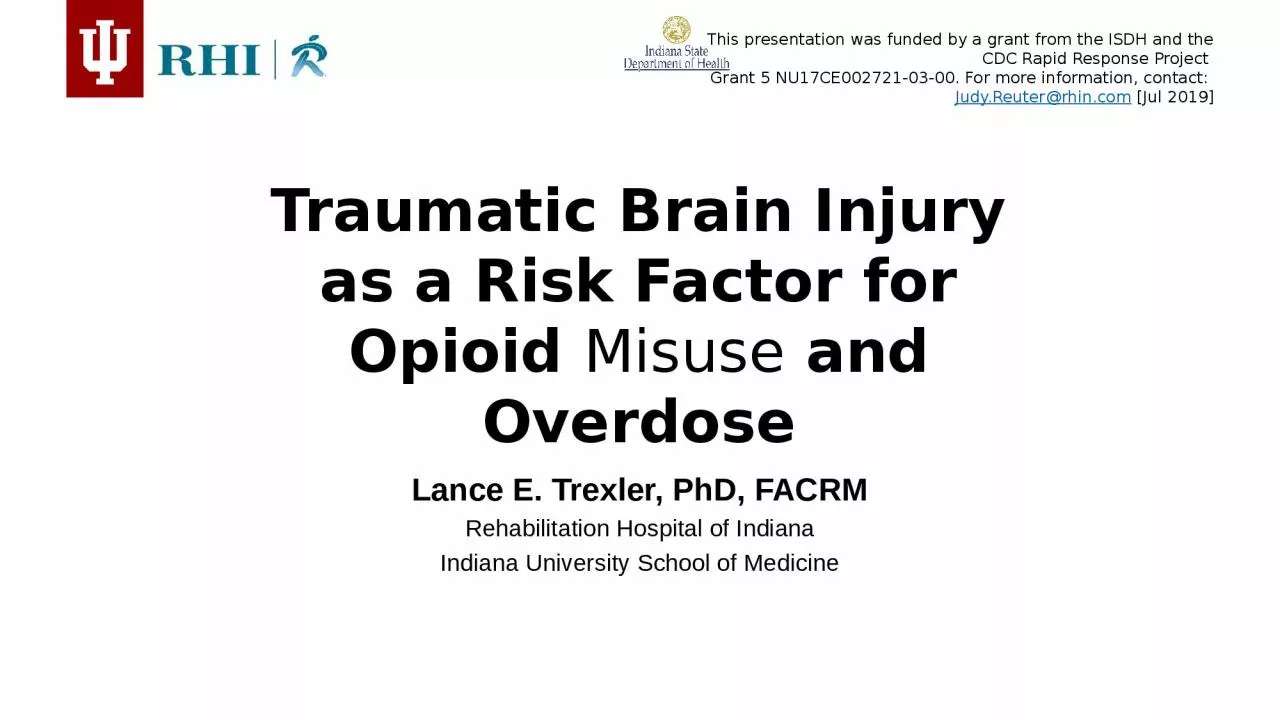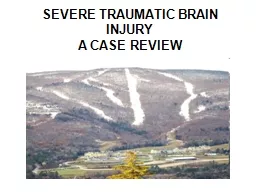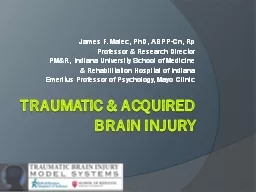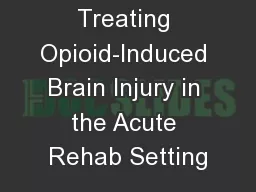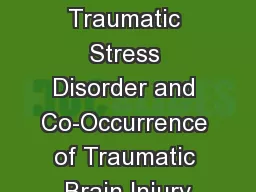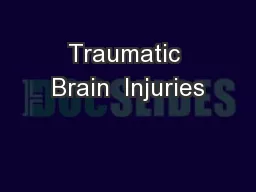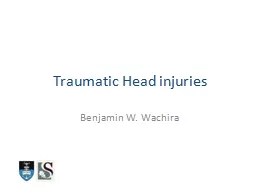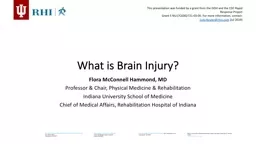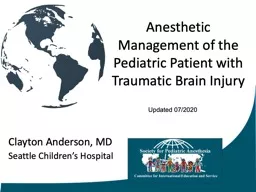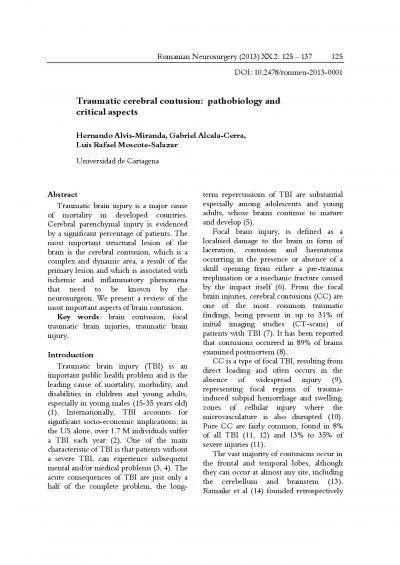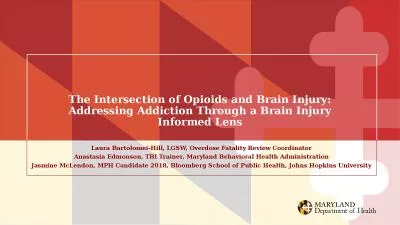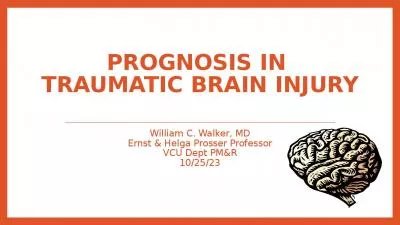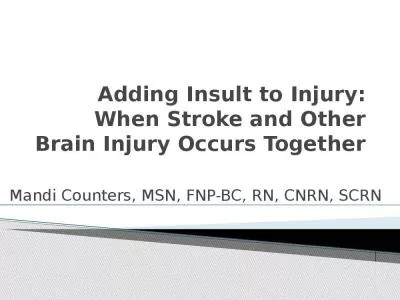PPT-Traumatic Brain Injury as a Risk Factor for Opioid
Author : SmoochieBoochie | Published Date : 2022-08-04
Misuse and Overdose Lance E Trexler PhD FACRM Rehabilitation Hospital of Indiana Indiana University School of Medicine Pain and Substance Abuse Treatment in TBI
Presentation Embed Code
Download Presentation
Download Presentation The PPT/PDF document "Traumatic Brain Injury as a Risk Factor ..." is the property of its rightful owner. Permission is granted to download and print the materials on this website for personal, non-commercial use only, and to display it on your personal computer provided you do not modify the materials and that you retain all copyright notices contained in the materials. By downloading content from our website, you accept the terms of this agreement.
Traumatic Brain Injury as a Risk Factor for Opioid: Transcript
Download Rules Of Document
"Traumatic Brain Injury as a Risk Factor for Opioid"The content belongs to its owner. You may download and print it for personal use, without modification, and keep all copyright notices. By downloading, you agree to these terms.
Related Documents

